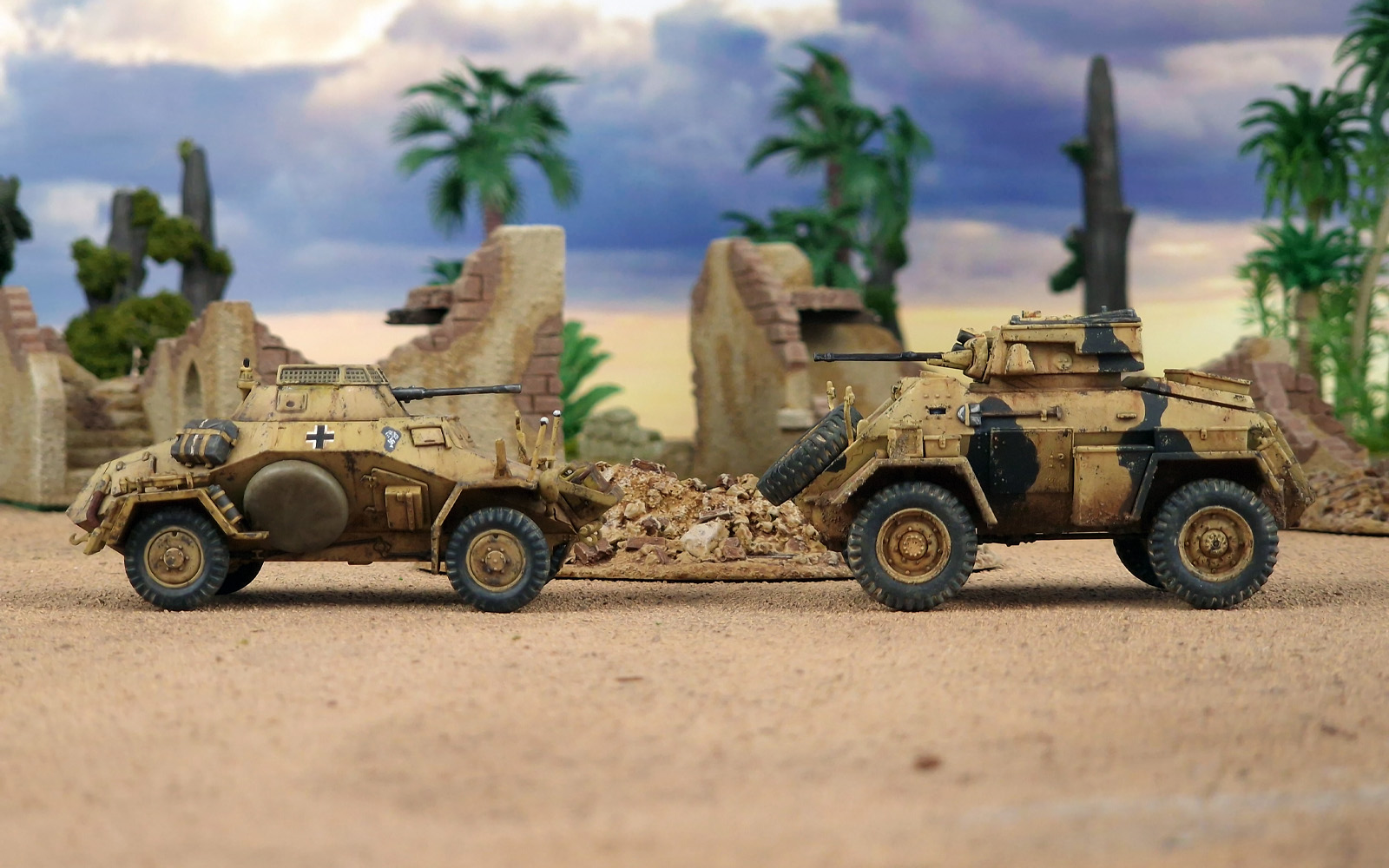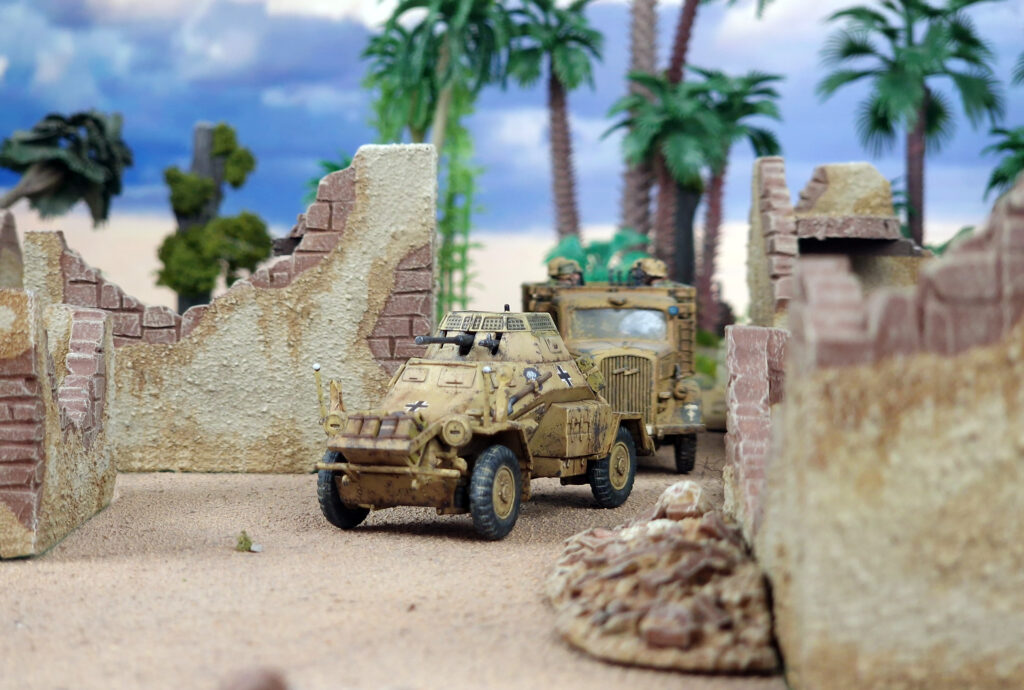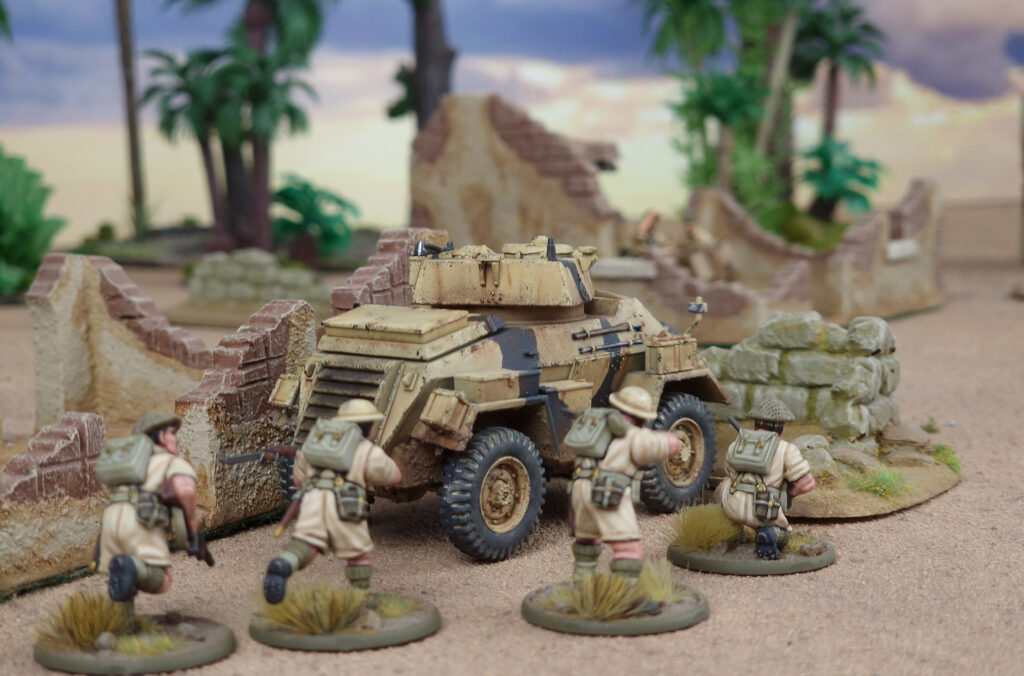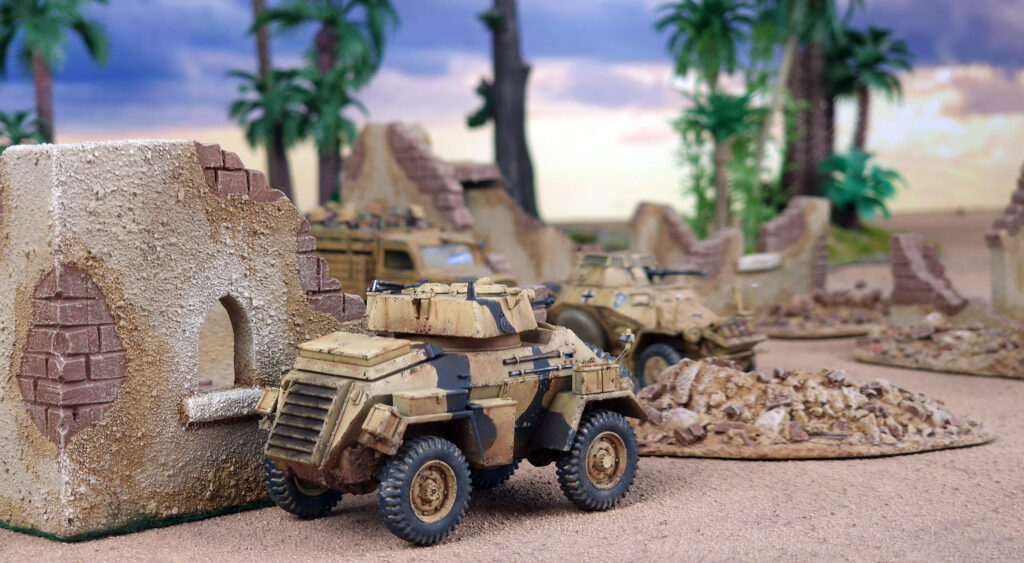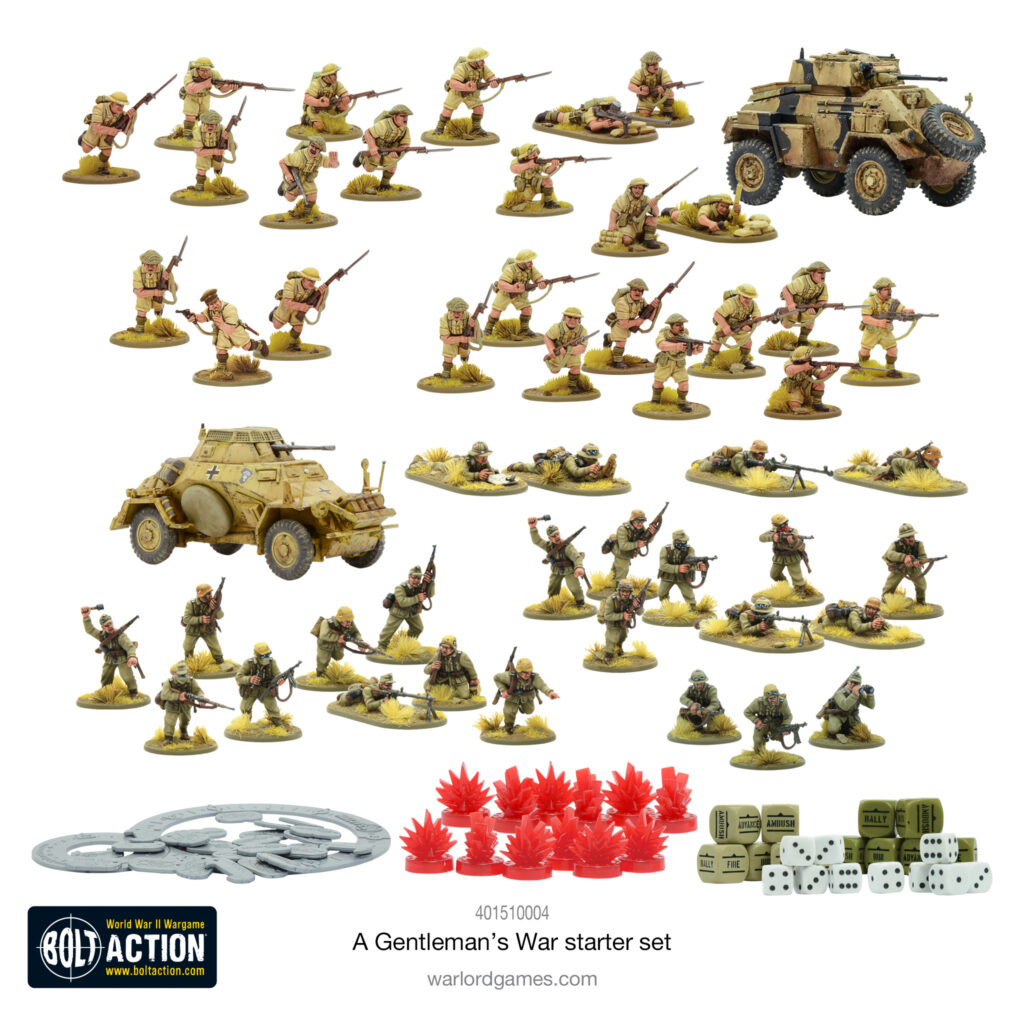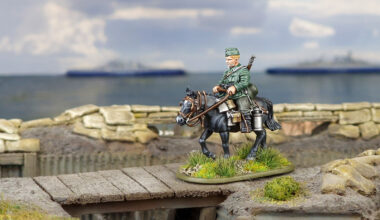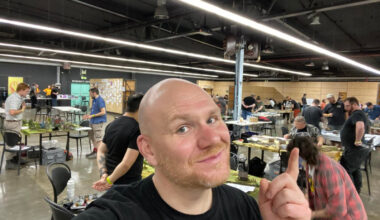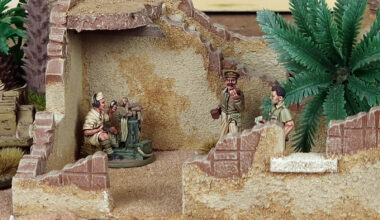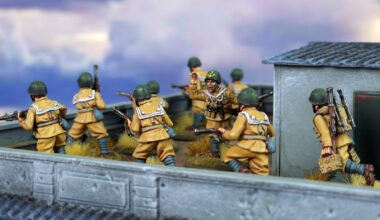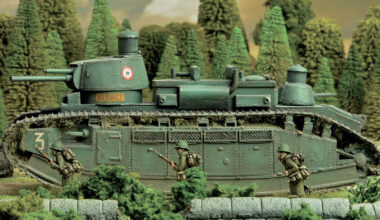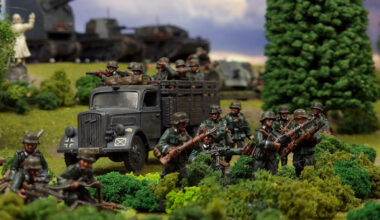Within the brand-new Western Desert-themed Bolt Action Starter set A Gentleman’s War, you’ll find a pair of brand new plastic armoured cars, exclusive to the boxed set, the German Sd.Kfz 222 and the Humber Mk II. It’s time to see how they stack up against one another in Head-to-Head!
Sd.Kfz 222 Armoured Car
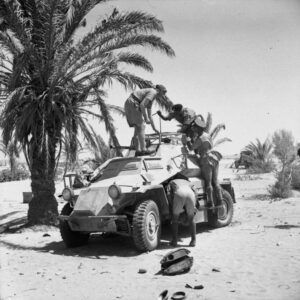
The Sd.Kfz 222 was one of the most commonly used armoured cars operated by the German military during WWII. The vehicle was designed to operate as a scout vehicle performing light reconnaissance roles within the Panzer and Panzergrenadier divisions. The 222 was armed with a 20mm cannon, as well as a coaxially mounted MG 34 machine gun in an open-top turret that was protected by an anti-grenade mesh screen. The vehicle entered service with the German army in 1936 and was also supplied to the Chinese nationalist forces fighting against the Japanese in the late 1930s. The Sd.Kfz 222 was utilised in every theatre the German army, operated by Luftwaffe, Heer and Waffen-SS forces, as well as the Romanian and Bulgarian armies.
The 222 was originally designed for fighting in Western European environments and performed very well in areas with superior road networks, utilising their speed to sow chaos and panic at the forefront of the lines. Come the harsh winters though, and on offroad terrain, the 222’s mobility was found to be lacking. In North Africa particularly, although the Afrika Korps received many of these armoured cars, their crews developed a dislike for their lack of range; as a result, many were fitted with an additional rack on the nose, suitable for carrying all-important jerry cans, with more fixed elsewhere, such as behind the turret (these are options on our new plastic kit too).
The vehicle was gradually replaced by vehicles such as the Sd.Kfz 250 half-track. Despite its limitations, the Sd.Kfz 222 remained in service right up until the very end of the war, with very few changes to the overall design throughout its production run.
Humber Mk II Armoured Car
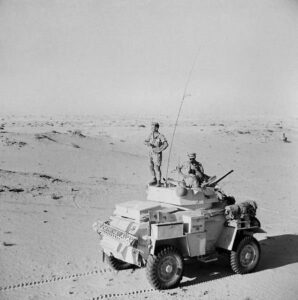
This armoured car was designed to fit a British army specification for a well-protected and armed reconnaissance vehicle, being protected by 15mm thick armour and armed with both a 15mm light autocannon and a 7.62mm machine gun. Despite weighing 5 tons the vehicle was still able to hit speeds of 50mph. The Humber Mk II entered service in late 1941, seeing combat for the first time in North Africa. The Humber proved a very capable machine and quickly went on to become the most produced armoured car in British Empire & Commonwealth service (when counting all variants this totalled around 5,400). In several theatres of operation, notably in Eastern Africa, the Humbers took a more offensive role, with long-range raids and patrols.
After Africa, the Humber went on to serve in Italy, Northern Europe, India and the Far East. The Humber’s service didn’t end in 1945, and post-war many served in the armies of Egypt, India, Denmark, Burma, Ceylon, Portugal, The Netherlands, Israel and Mexico. The last battles of the Humber were fought in 1962 in service of the Indian army, and today there are many to be seen preserved both in private hands and in museums. Interestingly, the commander of the 9th SS Panzer Division’s reconnaissance battalion, Paul Grabner, appears to have used a Humber armoured car in the fighting at Arnhem, widely believed to be a Mk IV.
In Bolt Action
Happily, in the heat of tabletop battle, we do not very often need to contend with the specifics of historical effectiveness. In the game of Bolt Action, both the Humber Mk II and Sd.Kfz 222 are of the same points values, carry the same weapons, and have the same armour values. They even come as stock with that most useful of special rules, Recce, a neat tool for erring on the side of caution to have your lovingly-painted armoured car swerve out of the way of an otherwise deadly killing blow.
Both vehicles thus share a similar role on the tabletop, useful for picking out enemy artillery or enemy light vehicles with their light autocannons and MMGs, rather than taking on thicker enemy armour. Both coming in at only 95 points for regular, these most ubiquitous of WWII armoured cars will fill out a nice support role in your force, able to rapidly redeploy to where they are most needed.
This makes the pair an ideal match-up for inclusion in A Gentleman’s War, as they function more or less identically. The only caveat to this is that the Sd.Kfz is Open-topped, rendering it a little bit more vulnerable to small arms fire. The trade-off for this is its Flak special rule – useful if your opponent takes a Forward Air Observer in their list.
Variant Builds
For extra flexibility, you can even choose to build the Sd.Kfz 222 as the 223 variant, which replaces the light autocannon and co-axial MMG for a single turret-mounted MMG and a radio – turning it into a Command Vehicle, with its distinctive bed-frame aerial.
Conversely, the Humber can be assembled as a Mk IV, which upgrades the light autocannon to a light anti-tank gun at a cost of +20pts. The Mk IV was the final and most produced upgrade of the Humber.
A Gentleman’s War
Both plastic armoured cars can only be found in the newest Bolt Action starter set, along with everything you need to get started playing the game – whether you’re a veteran looking to step into a new theatre or a newcomer to the game entirely.
Containing two opposing plastic forces set amongst the conflict across the arid desert war of the North Africa campaign, A Gentleman’s War contains the Bolt Action rulebook as well as a theatre booklet that guides you through your first steps in the game.
A Gentleman’s War contains:
- A5 Bolt Action rulebook
- A Gentleman’s War – Bolt Action Starter set booklet
- 24 Afrika Korps plastic infantry
- 1 plastic Sd.Kfz 222/223 armoured car
- 24 8th Army (Desert Rats) plastic infantry
- 1 plastic Humber Mk II/IV armoured car
- Waterslide decals
- Plastic Bolt Action templates & tokens
- Plastic Pin Markers
- 6-sided dice
- Bolt Action Order dice
